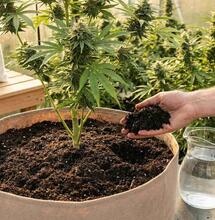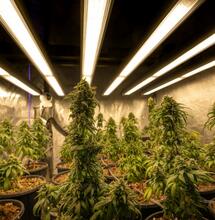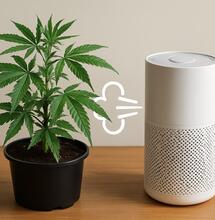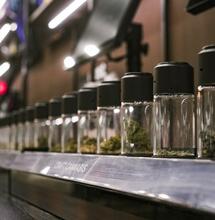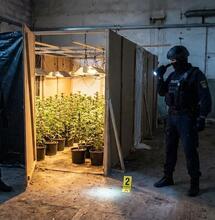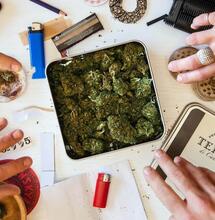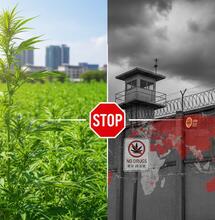Official Guide to Outdoor Marijuana Growing (2025)
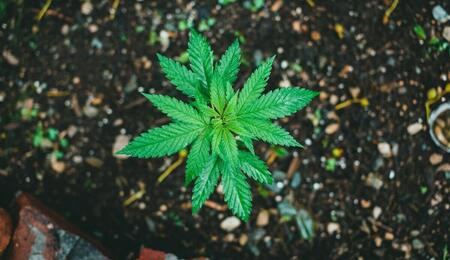
To prepare you for the 2025 season, Soft Secrets brings you the Outdoor Marijuana Growing Guide where you can find everything you need for a successful outdoor harvest. In different chapters we will walk you through each stage of outdoor cannabis growing, as well as suggesting related reading and highlighting some of the challenges. Get ready, because here you will have everything you need to grow outdoors and for free. In this first chapter, we talk about the location of outdoor planting, as well as the selection of marijuana seeds and their germination.
The question that many people ask (and ask us) all the time about outdoor cultivation:
How to Grow Marijuana Outdoors in 2025?
It is not a question that has a simple answer; it does need a holistic approach or a view point where many factors come together to achieve a successful cultivation. And the reasons?
To stop depending on the black market or on friends, tiredness of adulterated hashish, botanical interest, medicinal need - there are many reasons to start growing marijuana, an exciting world that fascinates those who try it.
Step 1: How to Choose the Place to Grow Marijuana Outdoors
Marijuana has to be grown somewhere; it can be somewhere around the house, such as the roof, perhaps the first place to examine if it’s suitable for this kind of operation. It can grow in many environments, and there are all kinds of crops: guerrilla, greenhouses, with nets, mixed indoor/outdoor, etc. In any case, the easiest way to start is growing in soil, topsoil if possible. Though, it will be necessary to opt for pots if the available site is a terrace or balcony.
It is also important to know the climate: is the weather bad in September and October, is the sun strong, is it windy? You should be aware of the weather factors in order to anticipate them before disaster strikes. The best cure is prevention, because once plants are damaged, they never give the same results as when they remain healthy. There is a lot of weather information on the Internet; if you are new to the area, you can always talk to the local grandparents, who will be happy to inform you about weather phenomena.
The Importance of Light in Cannabis Cultivation
The most important thing is light. It is necessary to ensure that the place has at least five hours of direct sun to be able to properly cultivate outdoors. Indirect exposure to sun will likely produce elongated plants that are unable to yield quality buds. But even if you don’t have another place, you can always try; you will learn something, but without investing too much money, because the results will be poor. South-facing sites receive the most light. Another environmental factor is the so-called light pollution or night light. In order to bloom, cannabis is guided by the decrease in sunlight hours that occurs during the summer; if during the flowering period it does not have complete darkness during the night, it gets confused, continues to grow or blooms poorly. This often causes problems on balconies, terraces and urban sites. We will continue talking about this in a separate chapter dedicated to flowering.
A little wind is not a bad thing, because it makes robust plants with strong stems, but very exposed sites are not suitable, as branches may break off. In addition, the plants will be forced to do extra work continuously and will dehydrate.
Another issue is discretion. It is true that there are courageous activists who show their plants without reserve, but the truth is that the police can always happen to ask questions and apply the Gag Law. There are also thieves, who are the worst kind of pest. Therefore, it never hurts to watch from where your grow operation will be visible. With shade screens and bamboo, a space can be enclosed from prying eyes. Sheltered spaces with good solar incidence are ideal, as they are also protected from the wind.
Quality water is vital for cultivation. If there is a nearby point it will be great to fill the buckets or install an automatic irrigation system.
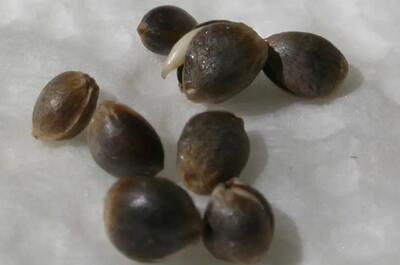
Step 2: How to Choose the Marijuana Seed for Your Outdoor Growing
After the place and the climate, the next decision to consider is the purchase of the hemp. Growing with free seeds of unknown origin is quite risky; it can result in poor quality plants that never bloom or have little resin. For decades now, there have been many seed banks led by serious people who are looking for the best parent plants to make seeds of stable quality and known characteristics. Buying seeds is not an expense, it is an investment, or as the popular saying goes: “what you sow you will reap.”
Many times we talk about things like Sativas, pure strains, F1, hybrids, polyhybrids, backcrossing (how fancy that sounds!) and other similar words. The subject can occupy entire manuals (in fact there are some like the well known Marijuana Botany), but for now let’s get down only to the basics.
Generally speaking, the Indica varieties are fast-flowering plants with moderate height, bushy structure, wide leaves, short distance between the branches, hard and resinous buds, early harvest, and they produce full-body sedation effect. On the other hand, the Sativa marijuana varieties are typically tall and elegant, with thin leaves, not very dense buds; they are late to harvest and their effect is more cerebral, more exciting. Most of the varieties offered on the market are hybrids with a certain percentage of Indica / Sativa. Among the sativas, the Haze is a legendary lineage.
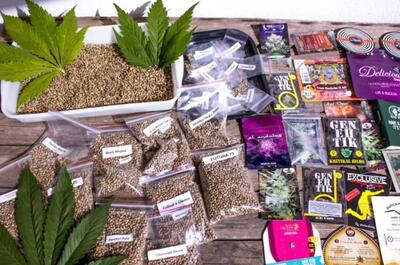
2.1 Seeds of Marijuana Landraces, Skunk and F1 hybrids
In places where cannabis grows on its own, “landraces” have been formed - original varieties with stable characteristics across the generations. This is called pure race, and examples include varieties that have the name of the place of origin, such as Hindu Kush, Chitral or Jamaica Blue Mountain. You can read more about landrace cannabis strains here. Professional seed banks do a commendable job of traveling around the world in search of seeds to preserve the pure genetics. When two different pure strains are combined, an F1 hybrid is created, with Skunk being the best-known example. This cross was developed in California in the late 70’s, during a time when the gene pool was not as contaminated as it is today, after 40 years of the War on Drugs. The history of the Skunk is in the origins of the marijuana seed banks. Counterculture travelers brought genetics from all over the planet to California, where the climate was excellent and there was more tolerance than there is today. Most sources confirm that the original Skunk is a cross between 25% Afghani, 25% Acapulco Gold and 50% Colombian Gold, although there are other versions. The Skunk is what is called a stable hybrid, that is to say, a variety in which the characters have been fixed on the basis of selecting parents in several successive generations.
F1 hybrids have the famous “hybrid vigor”, i.e. the combination of two different pure breeds forms an offspring with a unique strength, greater than that of the sire and dam. When a cross is made at home between an F1 male and an F1 female, the offspring is neither F1, nor has the hybrid vigor. Some will tend to the average, others will resemble the maternal grandmother, others the father, etc... This is one of the reasons why it is always better to buy quality seeds.
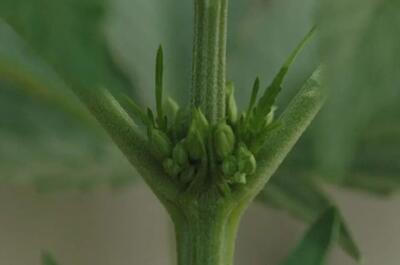
2.2 Good and Cheap Marijuana Seeds Are Better Than Bulk Seeds
You don’t have to choose the most expensive one - it doesn’t guarantee anything. Often the high price is only justified by the novelty of it or perhaps the seed carries exotic genetics, but is difficult to cultivate. If you are not an expert driver, maybe you don’t need a Ferrari; thus avoid getting slapped in the face, losing the money for the car and the desire to drive.
What Are the Best Cannabis Seeds for Beginners?
Despite their age, Skunk and its hybrids, such as the famous Critical or Green Poison are still the best for the novice grower. They are strong and resistant to mistakes, plus they give generous yields, with a wonderful taste and smell. Afghan marijuana seeds are also recommended - resistant, resinous and quick-harvesting, although in places of high humidity the hardness of their buds makes them sensitive to mold. If you prefer Sativas, a classic is the Amnesia Haze. We explain in greater detail how to grow Amnesia Haze here.
In many places they sell marihuana seeds in bulk, which in theory are the same as those available on this or that site, but much cheaper. This is not guaranteed by anyone - the seed determines everything that happens during growth stages, therefore it is worth investing in quality marijuana seeds, preferably by a known and trusted seed bank. Seed banks sell some varieties of cannabis very cheaply, so it is not worth saving a few bucks buying in bulk. Bank seeds have many advantages over bulk marijuana seeds.
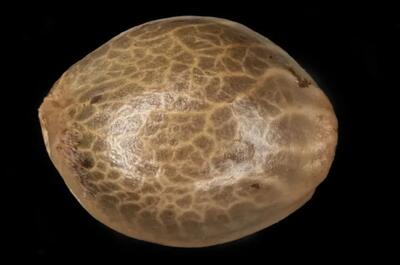
2.3 What Types of Marijuana Strains Are There?
Back in the day, marijuana was sold in a male and female format. Then, it was necessary to pull out all the males so that the females (now also called regulars) are not pollinated, resulting in the famous “sinsemilla marijuana.” For this reason, many people who did not dare to sex marijuana plants, used clones. Nowadays most of the market are female or feminized seeds, whose heirs predominantly produce female plants, although hermaphrodites can also appear. Hermaphrodites show traits of both female and male at the same time, so it is advisable to watch out for the appearance of male flowers, especially in the case of American varieties. Instead of the hairs or pistils that announce a female, two or more small balls appear, which are the pollen sacs.
Eliminate the males and also the hermaphrodite plants if you want to get sinsemilla. Here you can find more information on how to distinguish males, females and hermaphrodites in marijuana.
Before, plants only flowered with the shortening of the days, but now we can acquire autoflowering seeds, distant descendants of the ruderalis varieties. These varieties flower by the time of life, instead of the shortening of the day, so they can be cultivated out of season. They can also be put into plug gaps during photoperiod, grow them during the summer months and make an early harvest. Another system is to rotate autoflowering marijuana outdoors. In the beginning, autoflowering plants showed a lot of their rudelaris ancestors traits, and were plants of bad taste and little psychoactivity. Now they have improved a lot and can be easily confused with regular varieties. An autoflower that yields excellent results is the well-known Magnum. Autoflowering marijuana plants are highly recommended for places with light pollution, because they flower in spite of the obstacle. In any case, as they have a very limited time to develop, autoflowering plants do not respond well to mistakes. A problem that in other varieties would only cause a delay, in autoflower can ruin the entire harvest.
The ones that are easy to cultivate and of solid quality are the fast varieties. They keep their photoperiod character, but a touch of auto shortens their flowering time. This also provides them with a lot of vigor, which simplifies the cultivation. A fast marijuana strain with proven results is Green Poison Fast F1 version.
Another evolution of marijuana strains is the possibility to choose different cannabinoids. In 2010, the wave of CBD varieties came along, and with that the first strains with a 1:1 ratio of CBD and THC. That is to say, strains with more or less the same quantity of CBD and THC. Afterwards followed plants with CBD predominance. CBD is a cannabinoid that balances the effect of THC and makes it more bearable in 1:1 varieties. CBD-dominant strains are low in psychoactivity. It is best to grow your own CBD varieties for those moments when you prefer a more balanced effect, but there’s also the trick of mixing your THC buds with CBD cannabis, which is available in many CBD stores. Some examples of CBD strains are Sweet Pure CBD, Chocolate Skunk CBD or Y Griega CBD.
After the stabilization of CBD, strains with a high content of other cannabinoids such as CBG, THCV or CBDV started to appear. Some examples are Panakeia, Royal THCV or Auto CBD Victory. It should be noted that the breeding of CBD, CBDV, THCV and CBG has Spanish roots.
Finally it is necessary to emphasize the introduction of different colorations in the varieties. The blue colorations were already known, but the ranges of red, pink, purple or violet have become common and stabilized. The best known example is The Red Family, also the Mendocino Purple Kush.
There are different advantages and disadvantages in each type of marijuana variety.
No doubt you have many options for an answer when asking yourself which marijuana strain to plant? The answer depends a lot on the conditions of each grower. It is not the same to select seeds to grow in attics and balconies and seeds to grow in a greenhouse.
Every year here at Soft Secrets we publish a Strain Special, where you can find more information about the most special cannabis varities, with comments and everything. Take a look here for the most recent edition from 2025. On this page HERE, you can browse strain specials all the way back to 2011, and find information on hundreds of varieties, grouped by their special characteristics, depending on what you need.
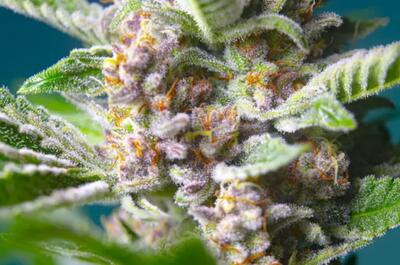
2.4 What Are the Advantages of Marijuana Seeds Over Clones?
Now that feminized seeds have eliminated the problem of males, there are many advantages to planting seeds outdoors. First of all, seeds have a very sturdy, apical root, while cuttings only form secondary roots (as above, so below). Therefore, seeds give rise to much more vigorous and productive plants. Cuttings have the advantage of being stable, but some of the most classic varieties have weakened from years of preservation. While those may be weaker plants, their daughters, or the varieties that are made with these clones, are much stronger. In addition, cuttings can get burned in the process of acclimatization to the outside.
However, you can get incredible results with cuttings, yielding a lot of ounces if you know how to handle them. In case of seeds, as well as in the case of cuttings, it is advisable to use appropriate stimulators to promote a healthy root mass in cannabis.
Step 3: When and How to Germinate Marijuana Seeds?
Do not go in a hurry when you germinate, especially if you do this in pots, because the plants will soon exhaust the nutrients in the containers. It is even better to wait until the end of April, when frosts are no longer so common. A plant germinated in March can confuse the winters of March and April with the arrival of autumn and start to flower. Then the days grow again, and this misleads the plant, returning it to the vegetative stage. On the other hand, a plant germinated in April, even in May, which grows without interruption, can become much larger. In addition, by planting late, the food contained in the potting medium is not used up as quickly. This of course relevant for the northern hemisphere; the times for germinating marijuana seeds in the northern and southern hemispheres are different.
The seed has a dormant life. In order for it to wake up from its long sleep, it has to get the impression that spring is coming. Then it will be able to grow and bloom during the summer. This is done with setting up mild temperature and humidity. There are many methods to germinate. The most common and simple is pre-germination in paper towels. Put the seeds on absorbent kitchen paper, spray them with water, and leave them in the dark, between two plates. The moderate temperature that seeds require to wake up is achieved by placing them on top of the refrigerator or a very gentle heat source. Between two and seven days they will show their white root. Watch to transplant immediately, spray with water if it dries out, but do not puddle the paper. When handling a pre-germinated seed you have to be extra careful - do not touch the root, as you can damage it. When they are not fresh they give more problems, but with special care it is possible to germinate old marijuana seeds. There are tricks to germinate old seeds, even if it takes longer.
Then there are several ways to transplant the seed. The classic is to prepare a small pot and put the seedling in a substrate. Water the substrate before transplanting so as not to drag the seed. Make a small hole and place the cannabis seed almost superficially, then cover it with a little soil. You can put cling film on top of the container to cover and maintain the humidity. As soon as you see that the seedling is shooting, remove the cover.
Nowadays germination trays are also available, which already come with prepared and moistened substrate. Just put the seed and wait; trays give such good results that you don’t even need to pre-germinate and it will greatly increase your success rate. Marijuana seeds are an important investment, so it is certainly worth using germination trays to make the most of it.
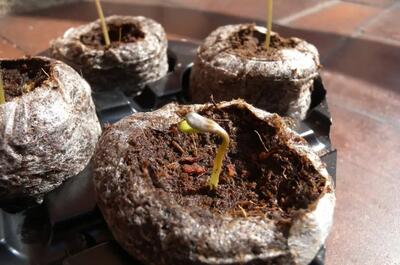
Step 4: Basic Care of Marijuana Seedlings
Initially the seedling will show two false leaves, which will be followed by the first pair of true leaves. Place them in the light, otherwise they will grow wilted. Sunny windows, small greenhouses or boxes are perfect spaces, as the young plant life remains protected from unexpected and undesirable weather. Acclimatize it carefully outside, a few hours each day. Make sure that excessive sun or heat does not dehydrate it. Watch out for slugs or snails that might come feasting on your seedlings.
Even if you intend to plant in topsoil, it is advisable to put it in a container first and transplant afterwards; this will allow you to create a strong root system that will feed the plant. From the very beginning, make sure that the containers have drainage holes or the plants will rot.
The best thing to do is buy a professional substrate for cannabis culture in any grow. You can make your own mix, but to start with it is much better and you play it safe. If you plant directly in your garden the fastest and most effective way to improve the soil is to make a good hole, take out the soil, and put a couple of bags of professional substrate. At the bottom add a few handfuls of bat guano bars. It will give you an excellent result.
Be careful also how you water. At the beginning the seedling cannot assimilate much water in its tiny body. Add little water and more frequently, rather than doing it a few times and abundant. Too much water prevents oxygen from reaching the roots, which causes rotting. Let the water stand in wide-mouth containers so that the chlorine is eliminated. Collect rainwater with barrels to take advantage of it.
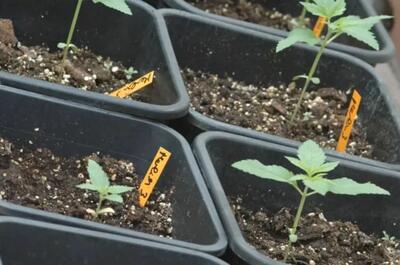
Step 5: Gathering Marijuana Information
It is a great idea to keep a notebook where you record all mistakes made - it can be extremely useful for the following seasons. If you grow more than one cannabis variety, label them so as not to confuse them. Another advice is to put sticky traps for pests around the crop; this way you will know if there is any unwanted guest who wants to infest, but we will talk more about this topic in a separate chapter.
It is actually important that you gather all kinds of information related to your growing operation. You can use a box and label it ‘outdoor growing marijuana 2025.’ Write a first note with everything you intend to do and put it in the box. Do a first round of information gathering: put there nutrition tables, seeds, cultivation diary samples, whatever you think of. From experience, I guarantee that the crops where a written commitment with clear objectives is established, is where success happens.
In the next chapter we will talk about the importance of good substrate and working with soil. Until then, keep your seedlings healthy!
This marijuana grow guide was originally published by Soft Secrets Spain
Author: Hugo Madera
